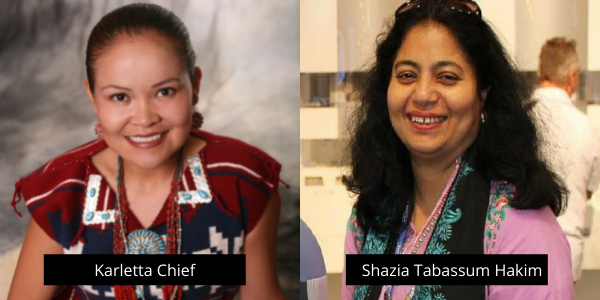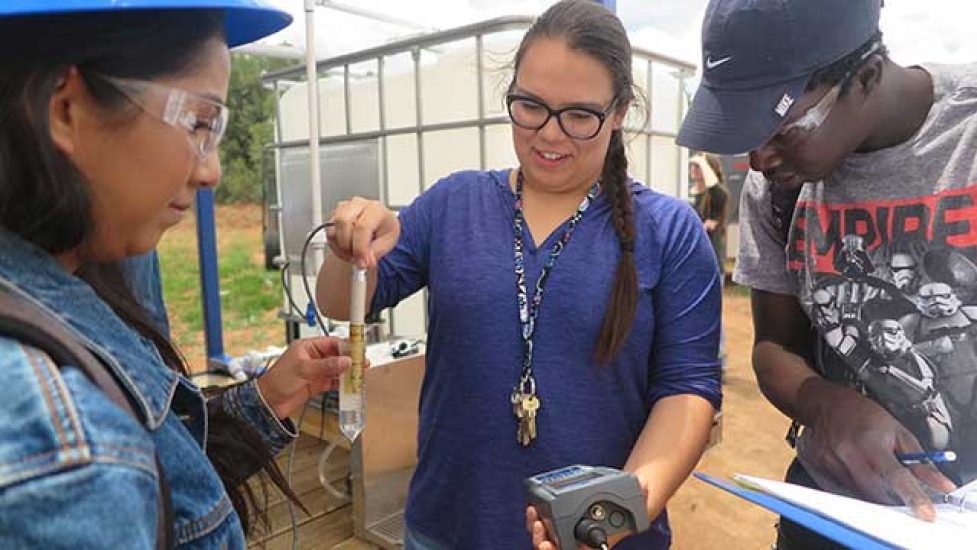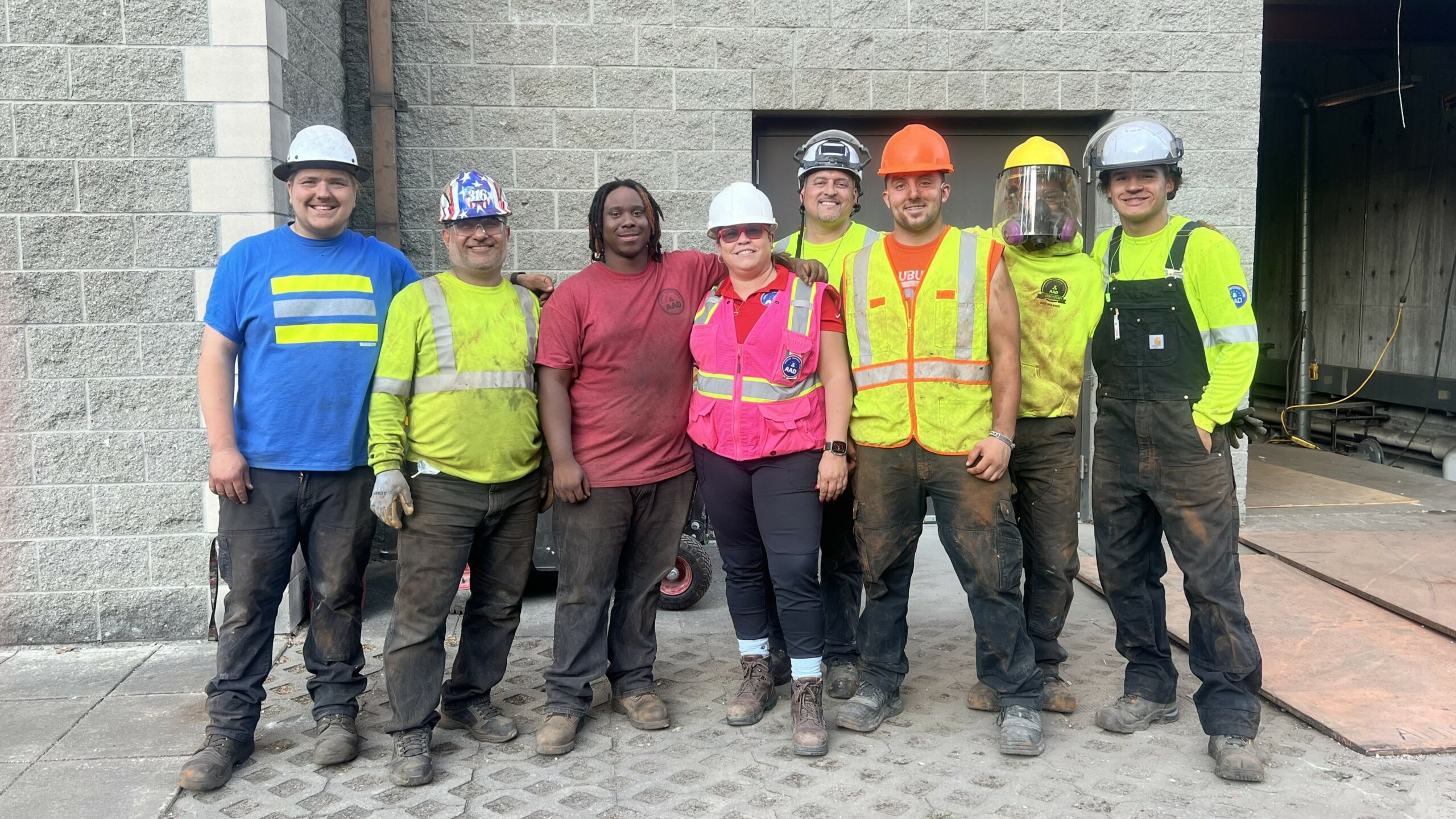Especially during the time of the great resignation and workforce shortages, homegrown talent has become more coveted than ever. A grant from the U.S. Department of Agriculture (USDA) is helping to develop future water scientists to work with and within Indigenous communities to address water challenges.
The $500,000 grant was awarded to the University of Arizona and Diné College – the oldest tribal college in the country – and is just the latest development in an ongoing STEM education collaboration between the two schools.
Hands-On Training to Solve a Local Issue and Create Jobs
Through the Tribal College Research Grant Program, Navajo students are gaining technical and hands-on training in microbiology, molecular biology, and chemical and microbial water analysis. Arizona is in the midst of a drought, making access to clean water even more difficult.
“Water access is a huge challenge for the Navajo Nation, not only because it’s on a semi-desert region but also because nearly 30% of Navajo people do not have access to running water in their home,” says Karletta Chief, Ph.D., associate professor and extension specialist for the University of Arizona’s Department of Environmental Science.
“If you’re living in a city, the condition and approach to water is totally different because it’s at your doorstep,” adds Shazia Tabassum Hakim, Ph.D., a professor of Diné College. “But when you think about the reservation, the main issue is the availability of resources.”

Water Reclamation and Reuse
Reclaimed water is the source at the center of the project, and not just from a strictly chemical or biological approach. The grant is exploring the technical and social impediments to alternative uses for that water. Students who participate in this project are involved in collecting data, water sampling, analyzing the quality of the water (looking for contaminants, determining the quality and alternate uses if treated) and then field research, outreach and education on water reuse.
The idea of recycling may seem simple, but there is special sensitivity to water, as it has significance to the Native American culture. And wastewater is considered taboo.
“Water is sacred,” says Chief, who is also a member of the Navajo nation. “Native Americans are very diverse and there’s more than 570 federally recognized tribes. But one unifying aspect to our perspective is that water is life. There’s a deep connection to water through religion, culture, identity, familial practices and ceremonies. So, when you talk about water, it’s a living entity that is respected and sacred.”
Students Trained Through Community Work
That’s why the grant project includes an outreach and education component, that Chief and Hakim hope will help demonstrate the understanding of water’s importance while presenting these experiments as possible solutions. With that in mind, who better to lead and execute the work than students from the community itself? Sophomore Tori Fulton is one such student.
“I’ve always held a strong sense of connection to my community when it came down to environment issues we have been dealing with. So, when Shazia brought this internship up to me, I was very interested because I see how we deal with water problems within the Navajo Nation as we only have so little drinkable water resources. The way I see it, sometimes the Navajo Nation is like a third world country and seeing how we lack water resources it can be scary and frustrating to see,” Fulton says.
Fulton was part of a group who conducted water analysis and collected water samples in the Tuba City area. Her group included eight students; some of traditional college age. Some are older with their own families. Tribal students participating in programs who are the result of the University of Arizona and Diné College partnership typically earn their associates degree;
Chief says the path to higher education for Native Americans isn’t always obvious or easy, which is why they’re focusing on the early student learner in the hopes that it may lead to more bachelors, masters and even Ph.D. candidates.
“We still have a long way to go in terms of the Navajo catching up in terms of educational degree attainment and educational statistics,” she says. “But definitely with the support of federal funding and other universities being partners who are sensitive to the cultural aspects of working with tribal colleges, I think that will definitely help move that even further.”
Filling a Resource Gap
The direct impact on their own communities may make participating in the education and the grant project itself even more attractive to tribal students. It piqued Fulton’s interest. She is pursuing a bachelor of science in biomedical science, and ultimately hopes to become a physician assistant.
“I feel it is a piece of knowledge that can be beneficial for anyone on the reservation to know how their water is being treated along with being distributed as many of us depend so much on our water resources. I want to be able to contribute my knowledge and experience to my Navajo people because water is such a key component in the physical and cultural world of the Navajo culture. I’d like to think I would be the lending hand to educate my people on matters that affect our water and give advice on what we could do to deal with those problems,” Fulton says.
Getting more Native Americans interested in higher education, and presenting solutions to their community to help fill a resource gap are dual goals for the grant. Hakim and Chief say they’re tracking the number of students trained through the program, the number of field demonstrations that will be conducted, and the number of outreach sessions they hold. They’d like to see an “informed dialogue” about this alternative source of water, and some acknowledgement that a tribal college partnership is actively seeking solutions.
“A program like this is very important because it’s a community-based project that addresses water scarcity of the Navajo nation with a potential solution, and it brings together Navajo students to be trained in research to see if solutions are viable,” Chief says. “It’s really for their community, by the community.”
Want to Know More About the UA and Diné College STEM Collaboration
The National Science Foundation-funded collaboration between the University of Arizona and Diné Community College, the Indige-Indigenous Food, Energy & Water Security and Sovereignty program has enabled students to build an off-the-grid water filtration system with the ability to serve 50 families on the far-flung Navajo Nation. The goal of Indige-FEWSS is to teach the next generation of STEM professionals how to confront food, energy, and water challenges in indigenous communities while letting traditional Navajo values and knowledge guide their work.
Indige-FEWSS: Restoring Harmony & Resources
A National Science Foundation-funded collaboration between the University of Arizona and Dine Community College, the Indige-FEWSS program has enabled student…











